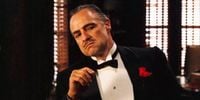In 2025, Francis Ford Coppola's The Godfather is widely regarded as one of the greatest films ever made. Released in 1972, this cinematic masterpiece elevated the gangster genre, transforming it into a compelling narrative akin to Shakespearean tragedy. With a star-studded cast including Al Pacino, James Caan, Robert Duvall, and the legendary Marlon Brando, the film's impact on Hollywood is undeniable. Interestingly, while the film enjoys monumental acclaim, Mario Puzo's original 1969 novel, which served as its source, does not share the same level of reverence among critics.
Mario Puzo, who co-wrote the film's script, crafted a narrative that captivated audiences and critics alike, leading to an Academy Award for Best Adapted Screenplay at the 1973 Oscars. The film primarily focuses on Michael Corleone's transformation into the ruthless head of the Corleone family, a storyline that resonates deeply with viewers. However, the novel contains extensive material that the film does not cover, some of which arguably detracts from the central plot.
One notable aspect of Puzo's novel is its fixation on Johnny Fontane, a minor character portrayed by Al Martino in the film. Fontane's drunken escapades in Hollywood, which slow down the narrative, were wisely omitted from the screenplay. This decision mirrors the way The Lord of the Rings sidesteps Tom Bombadil’s less engaging adventures. Readers often find themselves longing to return to the more compelling characters of Don Corleone and Michael Corleone.
Moreover, the film chooses to gloss over Sonny Corleone's (James Caan) affair with Lucy Mancini (Jeannie Linero), a subplot that the book elaborates on in detail. In the novel, Lucy undergoes a surgical procedure to correct a "pelvic malformation" that prevents her from enjoying intimacy with anyone but Sonny. This subplot, while intriguing, is perhaps better suited to the pages of a book than the silver screen, where pacing and focus on the main narrative are crucial.
The Godfather's cinematic adaptation is often praised for its ability to distill Puzo's characters into a streamlined narrative that resonates with audiences. By cutting extraneous plotlines and focusing on the core tragedy of the Corleone family, Coppola and Puzo set the stage for the film's unprecedented success. The Godfather not only refined Puzo's original work but also transformed it into a cultural phenomenon that continues to attract new fans.
Meanwhile, discussions around The Godfather II, the sequel released just two years later, have reignited interest in the original film. Film enthusiasts have recently been praising a specific scene from the sequel, describing it as "genius." A Reddit post has sparked a lively conversation among cinema lovers, particularly regarding a poignant moment towards the film's conclusion.
This second installment features a stellar cast, with Robert De Niro joining returning actors Robert Duvall, Diane Keaton, and Talia Shire. A particular scene involving Duvall, Shire, Pacino, and Caan has caught the attention of fans. One user shared a screenshot and a side-by-side comparison that highlights the brilliance of the scene, stating, "Genius – End of Godfather 2. Sonny in the frame has all the family around him and pay attention to where he's seated. Michael in the end is all alone and look at the backdrop to where Sonny was seated."
Fans have echoed this sentiment, praising the scene for its emotional depth. One user remarked, "It's powerful on many levels. Shows Michael is the outcast, the one that didn't fit and was purposefully rebelling against the family. That Sonny was the obvious follower of Vito, the one meant to be the next don." This analysis underscores the transformation Michael Corleone undergoes throughout the series, emphasizing the isolation he experiences by the end of the sequel.
Another user pointed out that the scene signifies a "huge transformation" for Michael, played by Al Pacino. They noted, "Whenever I watch this scene, there's sort of a hindsight thing going on. When you first watch The Godfather, Michael seems to have this huge transformation throughout the movie, but after this scene, I think to myself 'oh, he was much further along than I thought.'" This reflection adds a layer of complexity to Michael's character, suggesting that his moral decline was more pronounced than initially perceived.
However, not all fans agree on every aspect of the sequel. One cinephile expressed a desire for Marlon Brando to have made an appearance, suggesting that his presence could have added depth. Yet another fan countered, stating, "Godfather 1 belonged to Brando. Godfather 2 was all De Niro's. It's because they both gave such iconic performances in their respective films that I think keeping Vito off screen worked so well." This debate highlights the strong emotional connections fans have with the characters and performances of both films.
As discussions about both films continue, it's clear that The Godfather and its sequel remain cultural touchstones that provoke thought and analysis among audiences. The enduring legacy of these films speaks to their profound impact on cinema and storytelling, ensuring that they will be celebrated for generations to come.





